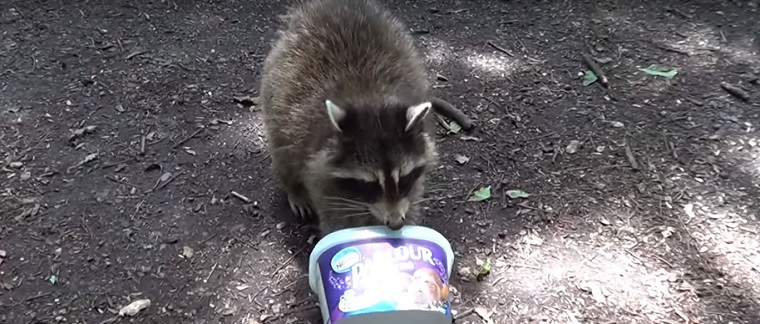|
|
|
|
How To Trap a Raccoon
Nuisance Animals
Raccoons can sometimes be a true nuisance. These animals are also dangerous because they tend to carry various
diseases. If you spot a raccoon or several Florida raccoons on your property, they may be there because they want to
forage in your garbage cans and destroy your property. In this article, we will teach you how you can trap a
raccoon and get rid of it from your property. Before you indulge into trapping nuisance raccoons on your property,
check your state’s law is it legal to trap a raccoon by yourself.

Using a Live Raccoon Trap
To trap a raccoon or several raccoons that invaded your property, you will obviously need a trap. There are various traps
made for catching raccoons. The best and most humane raccoon traps are live raccoon traps. Live raccoon traps usually come
as 1-door live traps or 2-door live traps. The raccoon bait for each type of these live raccoon traps is positioned in a
different way. You should keep in mind that you will need to place your live raccoon trap in a stable area. The live raccoon
traps entice the raccoons into them with food. Live Florida raccoon traps usually have a trip pan that will trigger its door to close
when the animal approaches close to it. Our recommendation is to place your raccoon bait behind the raccoon trap trigger if
you are going to use a 1-door trap. If you are going to use a 2-door live raccoon trap, we recommend you to place the raccoon
bait under the trigger. You can also place your raccoon trap behind the trigger plate in a 2-door live raccoon trap.
Putting Your Raccoon Trap in a Right Place
The best place you can set up your live raccoon trap is where you frequently see raccoons or the place where raccoons have caused damage.
Before you place your live raccoon trap, we recommend you to investigate where your raccoon guests live. You will most likely find raccoons
in areas that are covered. Those areas are woodpiles, tree hollows, porches, and attics. While placing the trap, you should also secure it
so the raccoon won’t be able to damage it. We recommend placing a brick over your live raccoon trap.
Choosing the Bait
Raccoons are Florida animals that can eat almost anything. These nuisance animals are known as opportunistic eaters, which means they will eat whenever
they find an opportunity for doing so. However, there are several foods that raccoons love the most. You should bait your raccoons with such foods.
Raccoons are particularly attracted to foods that contain high level of sugar and fat. This means that you should bait your raccoon invaders with
sugary foods, such as marshmallows. Keep in mind that these foods could also attract other wild animals to your property. You can also bait your
raccoons with bacon, sweet corn, wet cat food, and cooked chicken legs.
Baiting the Raccoon Trap
Once you have chosen the right Florida raccoon bait, you should know how to set the bait in your live raccoon trap. You should change your raccoon bait every two
to three days. While placing your raccoon bait, you should place it far enough in the trap so that the coon could enter it completely.
Checking the Live Raccoon Trap
Once you have placed your live raccoon trap, you should check it every day. You should check your raccoon trap to make sure the raccoon you caught doesn’t
die in the trap. And once you have caught the raccoon, you should release it in the wild or call a Florida wildlife service to remove it.
We service the following areas:
Boca Raton,
Bradenton,
Cape Coral,
Fort Myers,
Fort Lauderdale,
Gainesville,
Jacksonville,
Lakeland,
Melbourne,
Miami,
Naples,
Ocala,
Port Saint Lucie,
Saint Augustine,
Sarasota,
Tampa, and
West Palm Beach
|
| © 2001-2018 floridawildlifecontrol.com - site content, photos, & maintenance by Florida Wildlife Control, all rights reserved. |
| | |